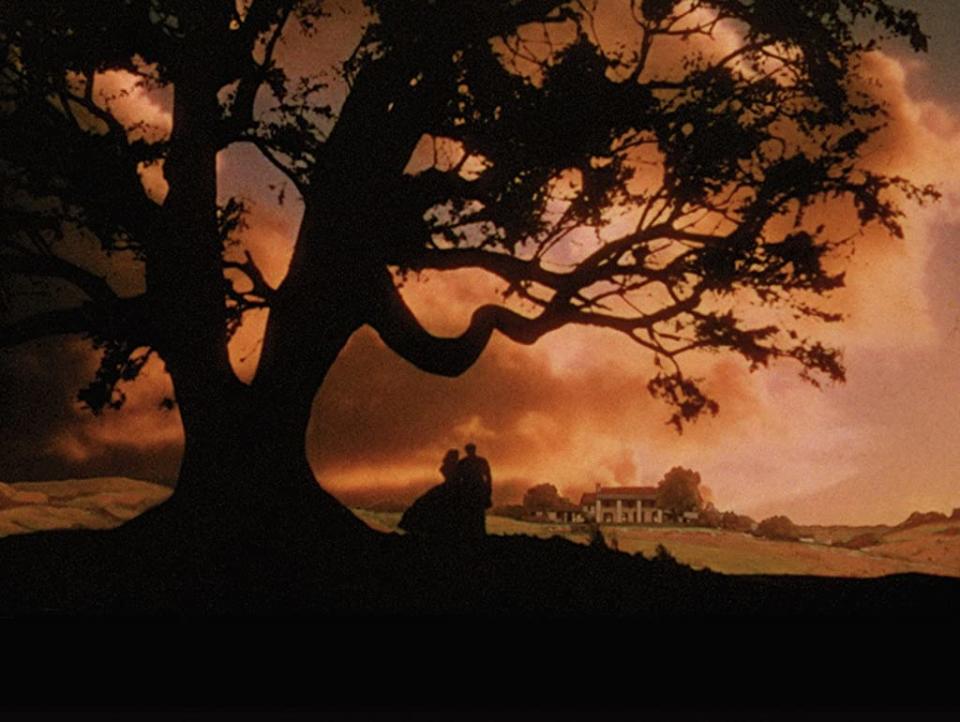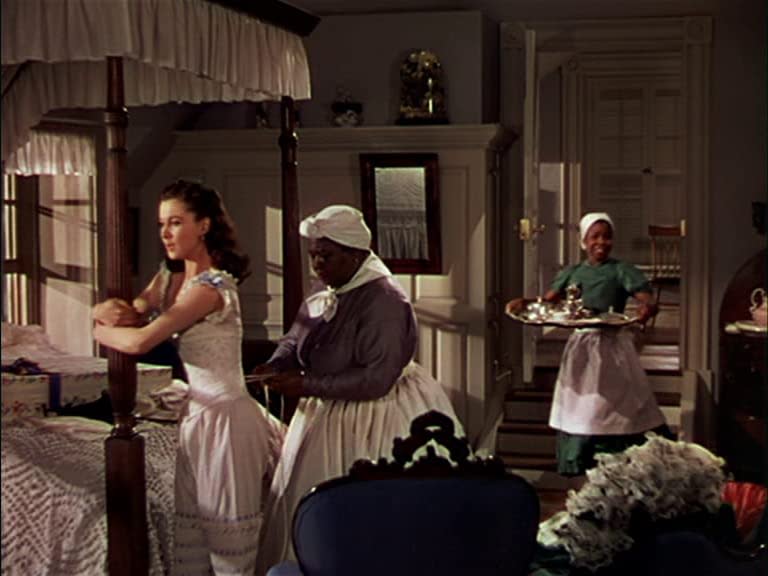Georgia's most popular movie is 'Gone with the Wind' — So why wasn't it filmed here?
- Oops!Something went wrong.Please try again later.
- Oops!Something went wrong.Please try again later.
- Oops!Something went wrong.Please try again later.
For a column intended to highlight films of Savannah and or all of Georgia, what could be a better subject than Gone With The Wind (GWTW hereafter)? This classic movie retold the fall of the Confederacy and the havoc that that loss wrought with the world it left behind – the “Old South” with Atlanta at its heart.
There is lots to praise in GWTW, including some fine performances, led by the young British actress Vivien Leigh, the handsome Clark Gable, Hattie MacDaniel as the bustling, wise enslaved person who shaped her owners’ lives (and won an Oscar for it, one of eight the picture won in 1939), and England’s Leslie Howard in the milk-toast role of Ashley Wilkes.
There are plenty of surprises behind GWTW, which portrayed life in Georgia, before, during and after the Civil War. The first surprise: nary a frame was shot in the state. All was filmed in California. The only thing Georgian about GWTW was its three-day, 1939 premiere which brought Atlanta pretty much to a standstill.
Recent Filmed in Georgia: Savannah is setting for ludicrous John Grisham plot in 'Gingerbread Man'
In Savannah: Clint Eastwood learned Savannah way from Sonny Seiler filming 'Midnight'
Filmed in Georgia: Robert Mitchum's history with Chatham County law influenced 'Cape Fear' role
For surprises, start with Leigh, the young English actress who had done nothing of significance to date. She was born not in England, but in Darjeeling, India, where her father, reportedly an officer in the British Cavalry, was stationed. She returned to England with her mother, and attended schools in France and Italy, becoming fluent in Italian and French.
Her acting experience was limited at best, although she had long wanted to become an actress and had attended the Royal Academy of Drama Art (RADA) in London, followed by a few minor roles on stage and film in England. In 1935, age 22, she me Laurence Olivier, already recognized as one of England’s great stage actors. Although both she and Olivier were married (she to a barrister 15 years her senior at age 22, and having given birth to a daughter), they began an affair that resulted eventually in a 20-year marriage.
Leigh read Margaret Mitchell’s 1,000 page, 1936 novel, "Gone With The Wind," which won the Pulitzer Prize for Fiction and quickly sold one million copies, and recognized the book’s central character, Scarlett O’Hara, as a role she had to have – and was well suited to play.
Filmed in Georgia: Stratton Leopold brought Hollywood, and a selection of stars, to Savannah
She convinced producer David O. Selznick who had searched far and wide for his Scarlett, even beginning filming before casting Scarlett, who was a headstrong, fickle, sexy, tortured and selfish ingenue of the Old South bent on a luxurious living life of the past. Men were pawns in her game. Like Scarlett, Leigh made good use of her exceptional beauty and was plenty head-strong herself.
In fact, Leigh lived a tumultuous life not unlike the character she played so well, winning the best actress 1939 Oscar.
Shortly after "Wind," she married Olivier, already a major player in British theater but yet unknown in America. Olivier had ventured to Hollywood to earn enough money in films to finance his theater productions in England. The two remained husband and wife for 20 years, traveled and played classic theater as far afield as Australia to raise money for the British war effort.
Leigh won premiere roles on British stage, including Ophelia to Olivier’s Hamlet when it was staged in Elsinore, Denmark. But she was given to fits of inexplicable rage when things didn’t go her way, fits she would say she couldn’t recall a few days later.
Filmed in Georgia: Savannah-shot 'Glory' provided moving insight into Black soldiers in Civil War
In 1952, she was recognized again with an Oscar – this time for Blanche Dubois in Tennessee Williams’s "Streetcar Named Desire," which she had played on stage in England and the U.S. She was a strong woman, and a fine actress. For her first Oscar, she butted heads with Clark Gable’s Rhett Butler. For her second, she took on Marlon Brandon as Stanley Kowalski.
Another surprise for 21st Century viewers is the film’s depiction of pre-emancipation plantation life. Where "Uncle Tom’s Cabin" highlighted the injustices of slavery, GWTW showed amicable life between blacks and whites, servants and masters, enslaved people and owners.

In fact, the chief influences on Scarlett were her mother and her servant, the oversized Mammy who kept Scarlett in line when she would overstep social boundaries – such as making a pass at just about any gentleman who could help her out. Mammy is the moral rock that keeps the story centered, and its characters worthy. “Mammy is one of the few people whose respect I’d like to have,” Rhett Butler says at one point, and he’s right.
There are other standouts for readers and viewers today – among them the liberal use of terms now abhorred such as "darky" and "pickaninny." Most of the instances are not said with malice but are just matter of fact descriptors. Black Americans today will find the whole premise horrendous -- but in the Old South – which included Atlanta and the rest of America in the 1930s -- they were not. Mitchell had been Atlanta-born and raised, where it was well accepted.
Filmed in Georgia: 'Deliverance' helped put state on the Hollywood map — for good or bad
Another minor player who played a striking role in the film was a dancer named Thelma McQueen, who came to be known as Butterfly because of her often fluttering hands (she legally changed her name to the new sobriquet). “I don’t know nothing about birthing babies!” she tells Scarlett in a squeeky voice that was actually her own.
Is Gone With The Wind still a great film? Has it survived the ages? At least one incident would argue yes.

At a sale of GWTW memorabilia in 2012, just two drawings of costumes for the film signed by producer David O. Selznick brought $60,000 at auction. Given the era in which it was created – in color no less – it was a milestone.
Today, the film is worth another look.
"Gone with the Wind" is available at your local library and is streaming on HBOMax and TCM.
This article originally appeared on Savannah Morning News: Movies filmed in Georgia: Gone with the Wind made in California

